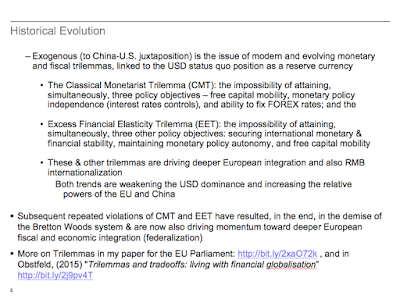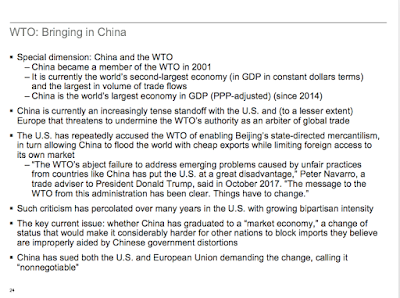A few days ago, I saw on Twitter some economics commentators, not quite analysts, presenting the following 'evidence' that Trump tariffs are being paid for by China: the U.S Import Price index has declined in recent months, to below 100. In the view of some commentators, this signifies the fact that the U.S. is now paying less for imports from the ret of the world because Chinese producers are taking a hit on tariffs imposed onto their goods by the Trump Administration and do not pass through these tariffs onto the U.S. consumers.
The argument is a total hogwash. For a number of reasons.
Firstly, as the U.S. Bureau of Labor Statistics notes (see
https://www.bls.gov/mxp/ippfaq.htm), import price indices do not incorporate tariffs and duties charged at the border. They actually explicitly exclude these. The indices do not include
any taxes, by design.
The indices are quality-balanced, so they are rebalanced to reflect relative quality of goods and commodities supplied. If the U.S. importer gets a better quality (new model, improved model etc) of a good from the exporting country for the same price as the older model, this registers as a decrease in the import price index.
Worse, as BLS notes: "Import/Export Price Indexes cannot be used to measure differences in price levels among different products and services or among different localities of origin. A higher index number for locality A (or product X) does not necessarily mean that prices are higher than for locality B (or product Y) with a lower index number. It only means that prices have risen faster for locality A (or product X) since the reference period."
Note the words: "reference period". Which leads to yet another major problem with the argument that BLS index shows that 'China is absorbing tariffs costs' from the Trump Trade War: it is based on a spot (one point) observation. So let's take a look at the time series. Remember, Trump Trade War started at the very end of 1Q 2018 (March 2018). So here are 'reference period' consistent comparatives for import price indices for a range of regions and countries:
What the chart above tells us is that over the period of the trade war so far, U.S. imports price index indicates some deflation of imports costs, somewhere in the region of 1.13 percentage points. But over the same period of time, China index experienced a decline of 1.36 percentage points. If China is 'paying for U.S. tariffs', the U.S. is paying more than China does, which is of course, entirely possible, but immaterial to the data at hand.
Worse, if declining import price indices are an indicator of a country 'paying for tariffs', well, Canada seems to be paying for most of the Trump Trade War globally, while Japan is paying a little-tiny-bit. Tremendous! Art of the Deal! And all the rest applies.
Of course, what the declines in the vast majority of import price indices suggests is the opposite of the 'China is paying for the U.S. tariffs' story. Instead, they tell us about the inherent weakening in the global demand, the deflationary pressures in key commodities markets (yes, oil, but also soy beans, etc), the deflationary pressures from new technologies and, finally, the changes in currencies valuations.
No, folks, there are no winners in the trade wars, but there are smaller losers and bigger losers. When you impose tariffs on final and intermediate goods, consumers and producers loose. When you impose trade restrictions on imports of basic commodities, without altering global markets supply and demand, you are simply substituting suppliers (see
https://trueeconomics.blogspot.com/2019/05/14519-agent-trumpovich-fails-to-deliver.html). The latter change might involve some costs, but these costs are much lower than restricting trade in higher value added goods.












































